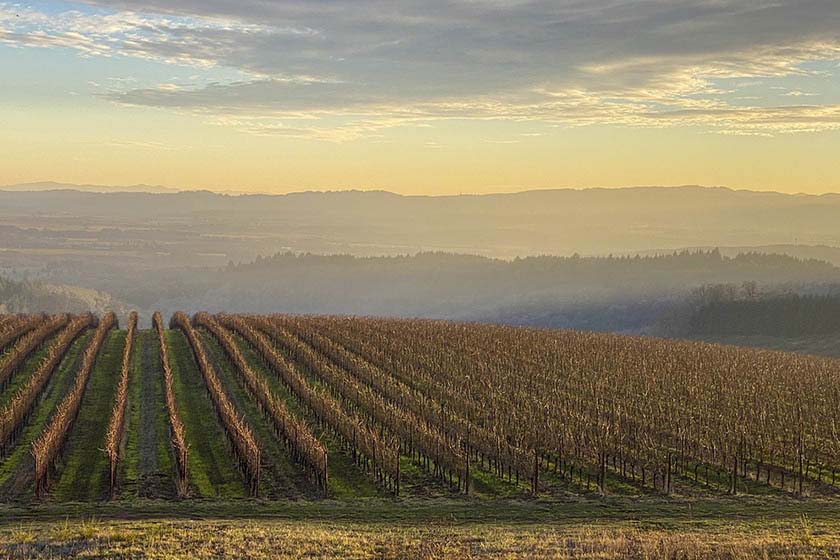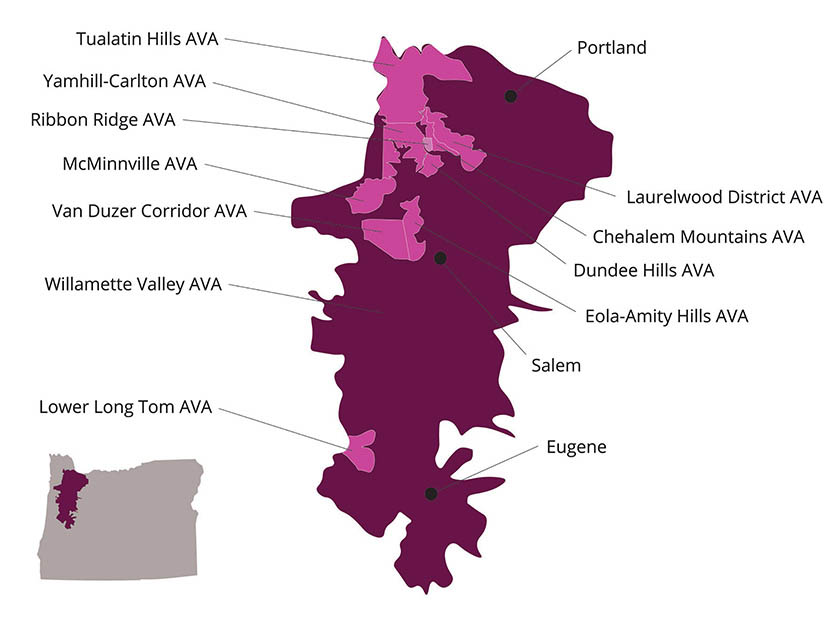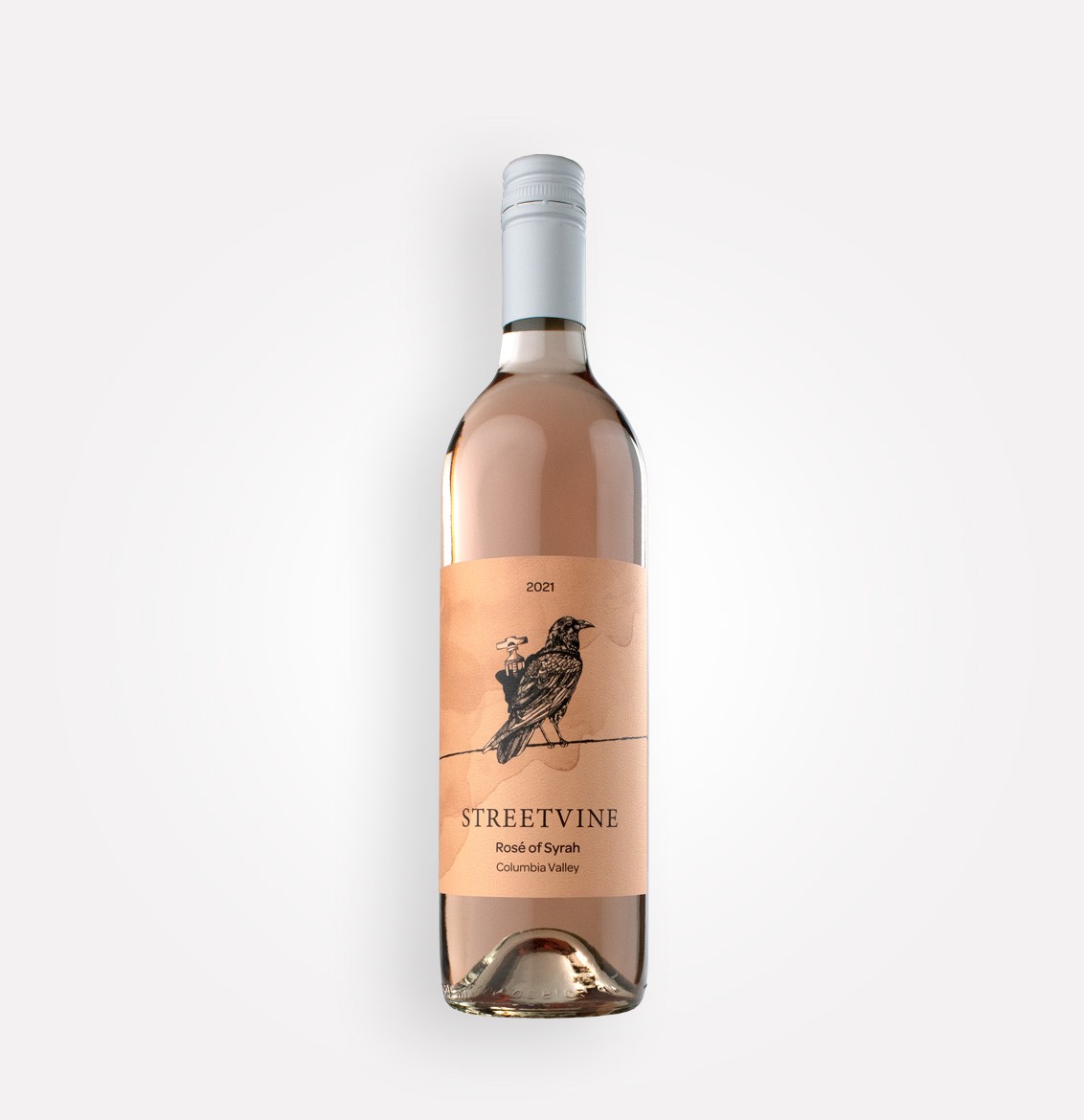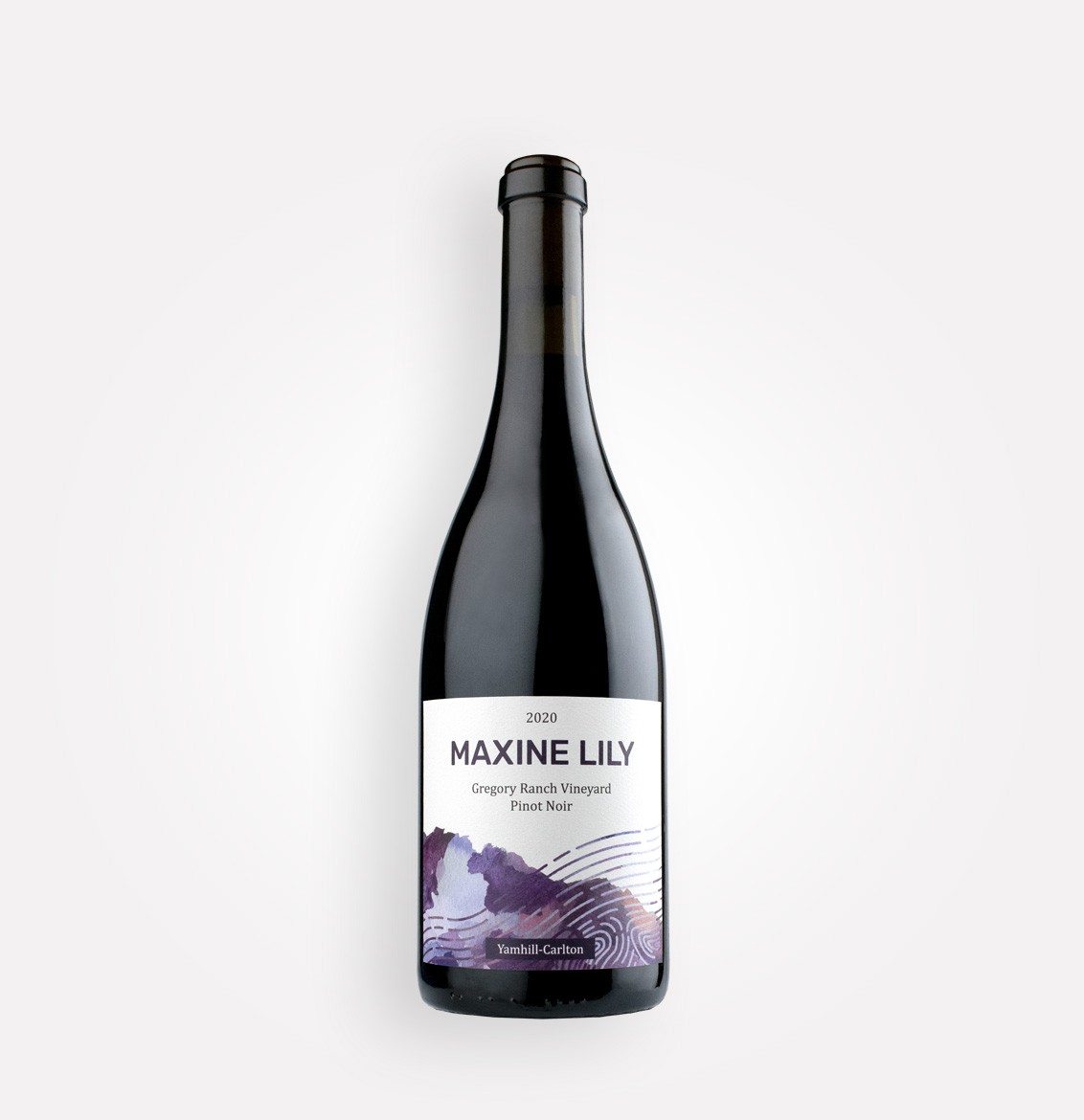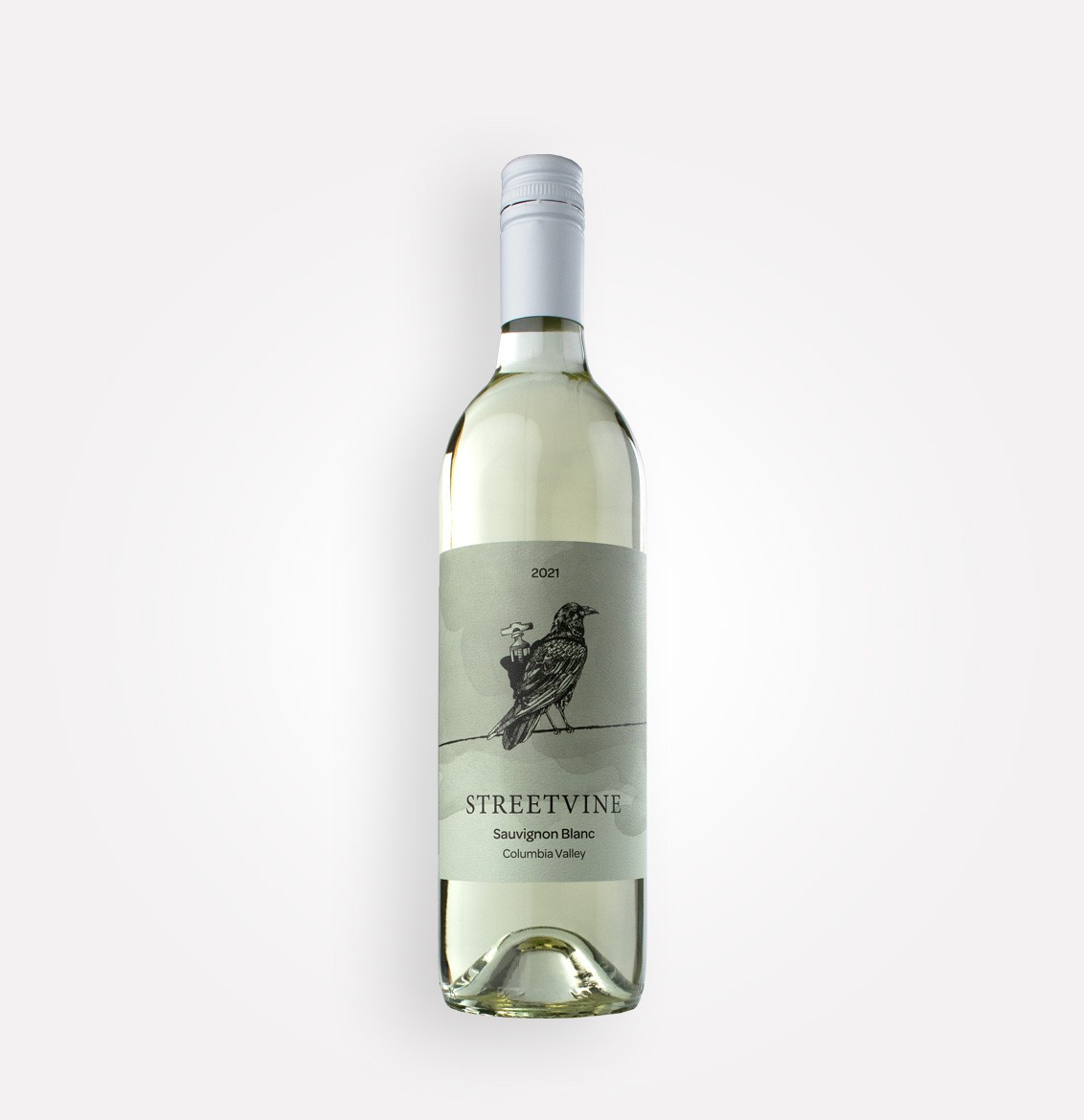Diving deep into Oregon AVAs and terroir
Terroir is the French word used to describe the natural environment, including soil, topography, climate, and human interaction in growing wine grapes and producing wine. A wine’s character is strongly influenced by place and is akin to the fingerprint of a region affecting the aroma, flavor, and texture. Understanding Oregon AVA terroir can help you find the wines you love.
The terroir big picture
Oregon terroir combines two hundred million years of geology, climate, thoughtful clonal selection, and a commitment to sustainable viticulture.
Oregon has a cool climate with long, sunny summer days and cool nights. The Pacific Ocean and Coast Mountain Range provide cooling afternoon winds in summer that moderate vineyard heat. Wine-growing areas also benefit from the northern latitude extending to 15 hours of daylight. The result is a long growing season that allows grape flavors and acids to stay in balance.
Soils derived from marine sedimentary rock, volcanic activity, and wind-blown loess set the stage for wines known for their food-friendly character, finesse, and age-ability.
Willamette Valley and its nested AVAs
Terroir, however, tells its best story as we delve deeper into a place. The Willamette Valley in the far north comprises the largest growing area in the state and is most notable for Oregon’s signature grape, Pinot Noir. The Willamette Valley includes ten nested American Viticultural Areas (AVAs). Each AVA has unique terroir.
Chehalem Mountains AVA
Defined by a distinct ridge with volcanic, marine, and Laurelwood series loess, the Chehalem Mountains AVA is home to diverse wines with good structure and acidity. Cooler vintages show forest fruits, while warmer vintages have muscular dark fruit and spice flavors.
Ribbon Ridge AVA
Ribbon Ridge is within the Chehalem Mountains, at a lower elevation and shielded from wind, resulting in higher temperatures with less rainfall. This area has marine sedimentary soils of the Willakenzie series with low nutrient content and water holding capability. The soil and warm location grow perfumed Pinot Noir with red florals, rose, and potpourri. Warmer vintages feature red grapefruit and candied citrus flavors.
Laurelwood District AVA
Unlike most AVAs, the Laurelwood District faces north and experiences the winds of the Columbia Gorge. The Chehalem Mountains protect from coastal rains. Laurelwood soils are young and underlain by basalt, which provides water for older, lower elevation vineyards. Older vineyards produce brooding wines with blue fruits and chalky tannins. Younger, higher elevation vineyards produce Pinot Noir with red fruits and floral character with chalky tannins.
Tualatin Hills AVA
The Tualatin Hills are part of the Coast Range, and the higher sections can be affected by both wind and rain from the Pacific. This isolated area has forests that moderate ocean influences. Sitting on the same loess as the Laurelwood District AVA, but with the weather from the Pacific, grapes are thick-skinned, producing wine with high phenolic extract and elevated acidity. Chardonnay has a significant complexity and structure.
Dundee Hills AVA
The Dundee Hills are home to the celebrated basalt-derived Jory soils, and these oxidized and well-drained soils are ideal for Pinot Noir. The vineyards have an eastward aspect and nestle in a warm, protected spot between the Coast Range and the Chehalem Mountains. Pinot Noir shows red fruits, floral, and truffle notes in cool vintages while displaying plum, chocolate, and earthy characters in warmer years.
McMinnville AVA
McMinnville features a unique challenge for the vine as they struggle to grow in the thin layer of weathered sedimentary and volcanic soil over marine bedrock in the Nestucca Formation. This struggle produces complex fruit flavors. Vineyards are at high elevation, and those facing south enjoy cooling Van Duzer Corridor winds that drop afternoon temperatures, preserving acidity. This combination results in small, thick-skinned berries with good acidity. Pinot Noir has a prominent, tannic backbone with dark fruit flavors, spice, and crushed rock.
Yamhill-Carlton AVA
Lucky vines in the Yamhill-Carlton AVA sit on coarse, well-drained marine sedimentary soil, the oldest in the Willamette Valley. The dominant Melbourne, Wellsdale, and Goodin soils rest over siltstone and sandstone parent material with fewer Willakenzie series soils. The Coast Range, Chehalem Mountains, and Dundee Hills protect this area. Harvest is early with ripe, full-bodied, and deeply-extracted wines. Textured wines feature blue fruits with purple floral notes and cola layered with earth, dark spices, and chocolate.
Eola-Amity Hills AVA
Analogous to McMinnville, the Van Duzer Corridor winds are a primary factor in the Eola-Amity hills. These cooling winds provide dramatic late afternoon temperature changes that produce small berries in small crop levels. Thin, rocky soil over basalt challenges the vine, leading to elegant yet powerful wines. Eola-Amity Hills wines have rich fruit, tannin, and acid showing characters of the forest, tea leaf, and cranberry with a salty iodine note.
Van Duzer Corridor AVA
Underlain by marine sedimentary soils, the story of the Van Duzer Corridor is wind. This AVA is immediately east of the gap in the Coast Mountains that allows winds to pass. However, the afternoon winds here are 40% to 50% stronger than in other AVAs. Cooler average temperatures result in a high skin-grape pulp ratio and red wines with intense phenolic structure, dense tannin, and firm acid. White wines, including Chardonnay, have good structure and weight with bright fruit and high acids.
Lower Long Tom AVA
The Lower Long Tom, has just 525 acres planted on Bellpine and Bellpine – Jory soils. Shallow clay loam Bellpine soils derive from marine sandstones. The Coast Range rainshadow creates a Mediterranean climate with cool, wet winters that foster good grape maturity. Pinot Noir dominates here with blue and black fruit flavors and velvety tannin. Chardonnay, Pinot Gris, Riesling, and other white grapes also grow well in the Lower Long Tom.
Mount Pisgah, Polk County, Oregon AVA
Oregon’s newest AVA, Mount Pisgah, Polk County is the 11th nested AVA and the second smallest AVA in the Willamette Valley. Densely planted, it gets its warmth from the Willamette River, mild winds, and in the rain shadow of Laurel Mountain in the west. The soils are shallow marine sediment which should create complexity for Pinot Noir, Pinot Gris, Chardonnay, and Tempranillo grapes growing there.
We’re only halfway through the terroir story, and there’s more to the south!
Learn more about Oregon wines
5 Oregon winemakers to know for Oregon Wine Month
10 things we love about Oregon wine country
We’re enjoying Oregon sparkling wine
Oregon Chardonnay’s engaging styles
Guide to cool climate viticulture
Let them drink Oregon Pinot Noir!
Delight is in the details – Oregon terroir on the edges
Delight is in the details – Southern Oregon terroir
Perspectives on Oregon and Bourgogne wines
